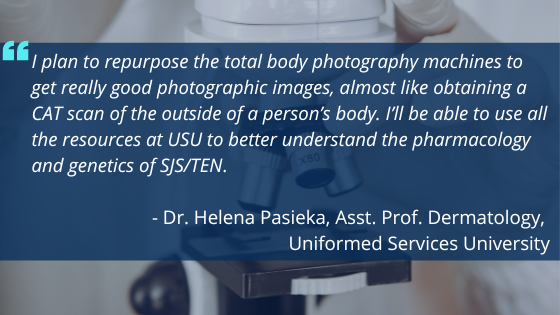“Many people tend to think of dermatology as mainly acne problems, basic skin ailments, and beauty issues,” says Dr. Helena Pasieka, assistant professor of Dermatology at the Uniformed Services University’s (USU) F. Edward Hébert School of Medicine. However, this often misunderstood specialty is much more than that. Skin is the human body’s largest organ, and some skin diseases can be deadly.

Among them is Stevens-Johnson syndrome (SJS) and the more severe Toxic Epidermal Necrolysis (TEN), two forms of the same life-threatening disease that are triggered by severe adverse skin reactions to a variety of medications. SJS and TEN cause a rash similar to a second-degree burn, as well as sores on the mucous membranes and eyes.
“SJS and TEN are mercifully not very common conditions,” notes Pasieka, who focuses her research around these conditions and others like them. “But they’re very poorly diagnosed because there aren’t that many people who have a high index of suspicion who’re trained to know what they’re looking for.”
Within the last year, Pasieka has started setting up a translational science lab at USU. Her main goal is to create a biorepository to collect SJS and TEN patient tissue and data about their hospitalizations, biosigns, blood work, and lab tests. She hopes to receive patient samples from across the country.
Click to read more.
